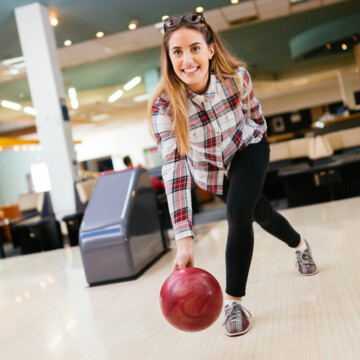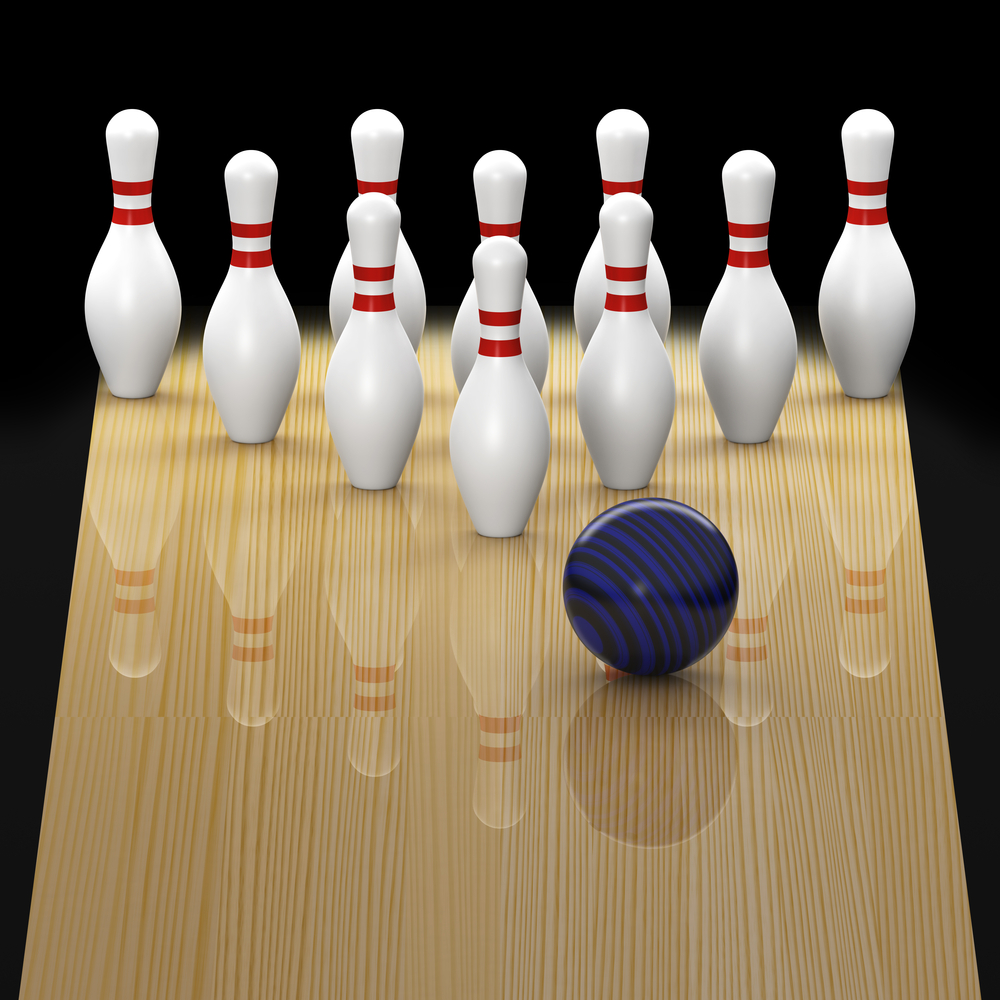
They say that in order to get far in life, you must always follow the straight and narrow, but what if that pathway doesn’t always work out for you? Now, before you double-check the title, yes, this is an article about hook bowling. You haven’t accidentally stumbled into a moral debate.
What we are talking about is a bowling technique called hook bowling, a style of throwing that helps show that when it comes to the game of bowling, straight ball bowling isn’t always the right way to tackle a spare.
If you want to skip right to my top pick for the best bowling ball for hook bowlers, I recommended the following hook bowling balls:
What is Hook Bowling?
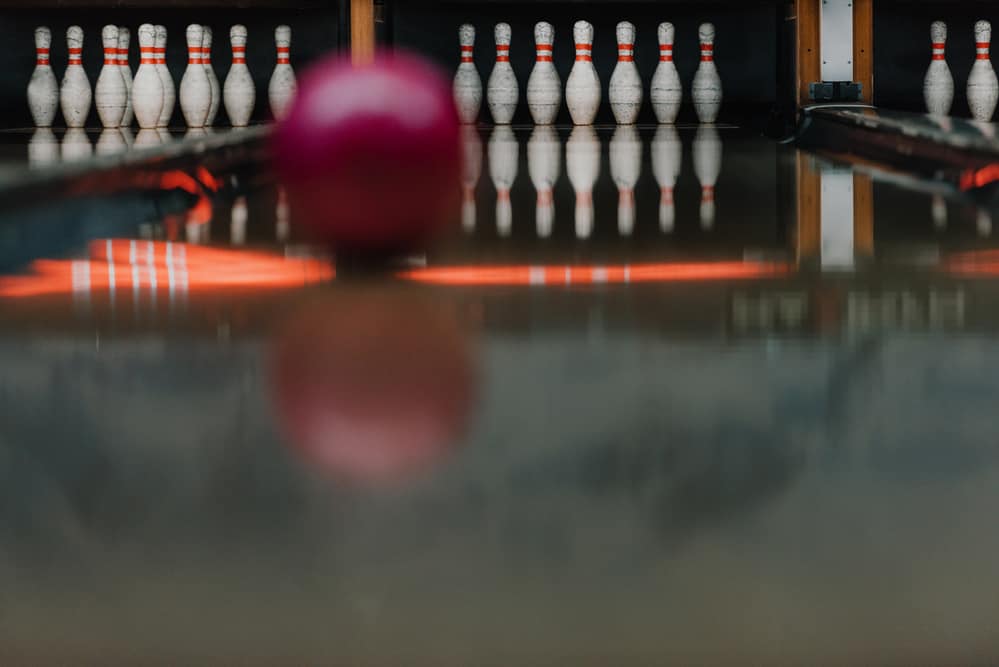
The technique of hook bowling is where a bowler uses a special type of reactive ball to create a hooked, or curved throw. This means that instead of the conventional straight throws regular house plastic balls are made for, this ball is designed to take a curved path toward the pins.
Many bowlers actually favor the technique of hook bowling compared to other types of throws due to the way hook bowling is designed.
The purpose of hook bowling is to change the angle of the ball’s approach to what is called the pocket.
The pocket is the space between the head pin (pin 1) and the two pins diagonally behind it (pins 2 and 3).
Right-handed bowlers usually aim for the pocket between pins 1 and 3 while left-handed bowlers stick to pins 1 and 2. Even with careful aiming and plenty of practice approaching this pocket straight on can have its difficulties.
This is where hook bowling comes in. Based on the bowling ball itself, the bowler's stance and approach, as well as the way the bowler throws the ball, a hooked throw will curve down the lane as it approaches the pins.
This curve helps change the angle of the ball’s approach and creates a better chance to knock down more pins when the ball makes contact since the ball hits the pins at a diagonal angle instead of straight on.
Key Takeaways
- How hook bowling works: Hook bowling uses a curved throw, enhancing angle and power to knock down pins effectively. It focuses on the pocket between specific pins for higher scores.
- Bowling balls that hook: Specialized bowling balls, like resin or particle balls, are essential for consistent hook throws, offering better grip and friction on the lane due to their design.
- Bowling ball maintenance: Maintaining a bowling ball involves regular cleaning with a microfiber towel and designated cleaners, alongside periodic resurfacing to restore its friction and hook potential.
- Hand placement: The grip and release technique in hook bowling is crucial, with the fingertip grip for resin balls and a release that spins the ball, aiming for a handshake finish for precision.
- Time spent bowling: Practice is critical to mastering hook bowling, with exercises like spinning a tennis ball to understand the motion and build skill before applying it in the game.
Why Do You Hook a Bowling Ball?
Many bowlers find that switching their style to hook bowling greatly improves the quality of the scores (i.e., increases their average bowling score).
When you hook bowl you are setting yourself up for better angles towards the pocket of the pins, resulting in more strikes and spares, more pins knocked down, and more points in general.
The style of hook bowling also generates more power with your throw, so even if you miss the sweet spot of the pocket you have a chance to get more pins due to the force of your throw.
| Hooking Elements | Details | Importance |
|---|---|---|
| Hook Bowling | It helps in understanding and improving hook-throw skills. | Offers strategic advantages over straight bowling. |
| Bowling Balls | Specialized balls (resin, particle) are preferred for their grip and friction capabilities. | Essential for consistent, effective hook throws. |
| Maintenance | Involves regular cleaning with microfiber towels and periodic resurfacing to maintain friction. | Crucial to preserve the ball’s hooking ability. |
| Technique | Emphasizes the correct grip and release for spinning the ball into the pocket. | Key to mastering hook bowling and improving scores. |
| Practice | Recommended to practice spinning motions with smaller balls before applying techniques in bowling. | Helps in understanding and improving hook throw skill. |
A lot of bowlers also find that switching to hook bowling puts them in higher levels of leagues and tournaments.
Better scores mean better results, and after you have mastered the art of hook bowling, you have a better chance of being a more well-rounded bowler. Hook bowling also helps bowlers traverse tricky oil patterns. A lot of oil patterns are more saturated in the middle of the lane, with less oil on the outskirts.
By hook bowling, you can use the lane and oil pattern to their fullest potential and position your ball better. You can also use hook bowling for shorter oil patterns, which are considered more difficult, though this method can require more practice.
Why Do Bowling Balls Hook?
Bowling balls usually hook due to the throw of the bowler. Many bowlers spend countless practices perfecting the art of hook bowling, altering their releases and finger grips.
While some bowlers are able to achieve a hook throw with regular house balls that are made of polyester or plastic, these types of balls make it hard to have constant, reliable results.
In order for a house ball to hook, it must be thrown in the exact right way with an overexertion of power to compensate for the oil on the lane.
So while hooking with a house ball can be done, it may not be the best way to learn hook bowling or play the game.
The best way to get a bowling ball to hook without exhausting the bowler would be to get a special type of ball designed especially for hook bowling.
These balls are known as resin or particle balls and have specially drilled holes that encourage the throw needed to achieve a hook ball.
The balls also have porous holes as well as microscopic peaks and valleys covering their surface in order for them to grip the lane and generate friction as needed during a hook throw to provide traction through the lane oil.
These balls can be found and ordered at special pro bowling stores. They usually start around $100 before going up from there.
However, special particle balls may be worth several hundred dollars, so make sure you research what type of ball you would like if you decide to try hook bowling.
You should also have your ball fitted to fit your hand as accurately as possible, sticking with the fingertip grip for resin and particle balls designed for hook throws.
Many pro bowling shops offer free sizing and drilling with the purchase of a specialized bowling ball, so it is always good to look around and see what each store offers.
Why Does a Bowling Ball Lose Its Hook?
Yes, that is right, that fancy bowling ball that you have spent a few hundred dollars on will eventually lose its hook. Now before you throw in the towel on hook bowling, remember that bowling is a sport as well.
Just like in any other sport the equipment gets used and eventually wears down before breaking and while your bowling ball may not break in half like an old golf club, it can wear out after a long period of use.
In order for a ball to hook the specially designed ball has many porous holes on its surface in order to create friction and thus a better grip.
As you bowl the lane oil is slowly absorbed into these pores, resulting in clogged pores and loss of friction.
The same problem can occur for the valleys and peaks that cover your ball’s surface. As you bowl oil is absorbed in between the peaks and valleys, flattening your ball and causing a loss of traction.
Another issue you may encounter with the valleys and peaks is that as you bowl the wear and usage of your bowling ball slowly sands down the peaks and valley, resulting in a flat surface that has a hard time generating the friction you need to get your ball to hook and presents an easier surface for the oil to stick to.
Can You Regain Lost Hook?
Naturally, when you want to make an investment in a sport, you look for ways to protect and preserve that investment. While there is no way to completely prevent the loss of a bowling ball’s hook, there are ways that you can extend your bowling balls lifespan.
Home Remedies:
The internet is full of information and while a lot of that information can be good and insightful, some of it can also be misleading as well.
On the internet or through word of mouth there can be an assortment of home remedies that people have used to clean their bowling balls.
While some of these remedies may work on a weird chance, it is never a good idea to use them on your bowling ball since it may damage or ruin the ball instead of helping it.
Always look for cleaning and maintenance methods that are supported by reputable bowling associations like the PBA and protect your investment in this amazing sport.
Cleaning:
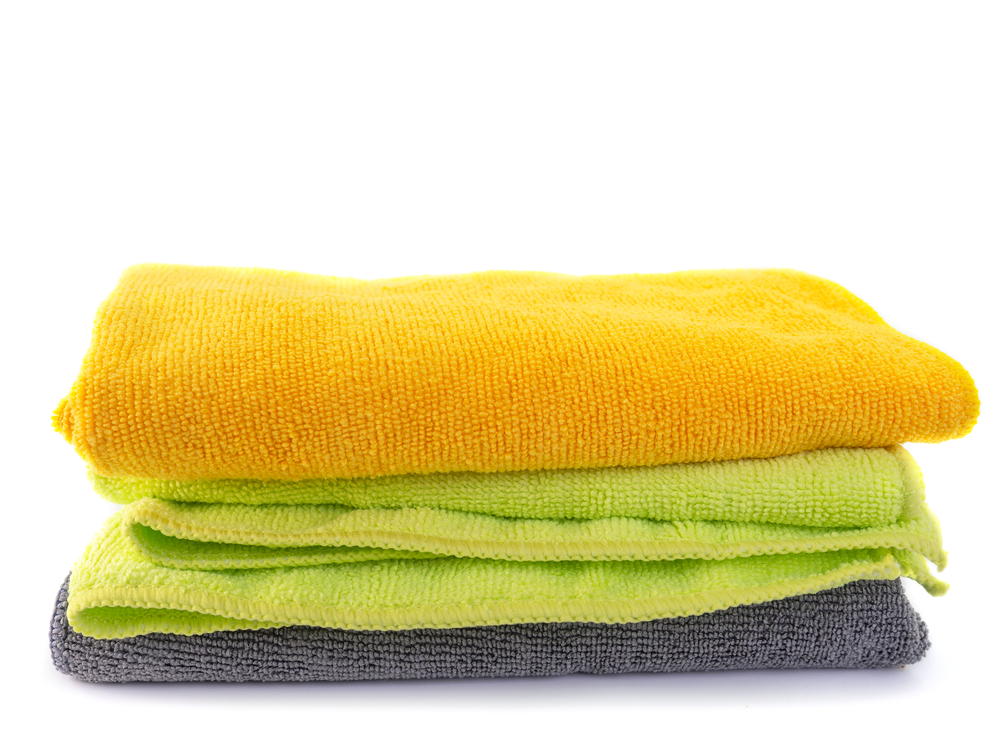
Like all sports equipment, you should regularly clean your tools in order to keep them better maintained and in tip top shape. The same goes for bowling balls!
For bowling balls, a clean, microfiber towel is the first step in keeping your bowling ball in excellent shape.
After each use, you should rub down the ball with the clean towel in order for the microfibers to pick up the oil that is threatening to clog the bowling ball’s pores.
This type of cleaning should be done immediately after use, preferably right after each shot or at the bowling alley before you put your ball away.
The reason for this being that the faster you wipe down your ball, the less time the oil has to be absorbed into the pores where the towel won’t be able to reach the clog.
Another method of cleaning is using a type of cleaner designed specifically to pick up the oil off the bowling ball without damaging the ball itself.
It’s also important to stick to designated cleaners and not try home remedies since some of these methods can damage or ruin the ball entirely!
Resurface Your Ball:
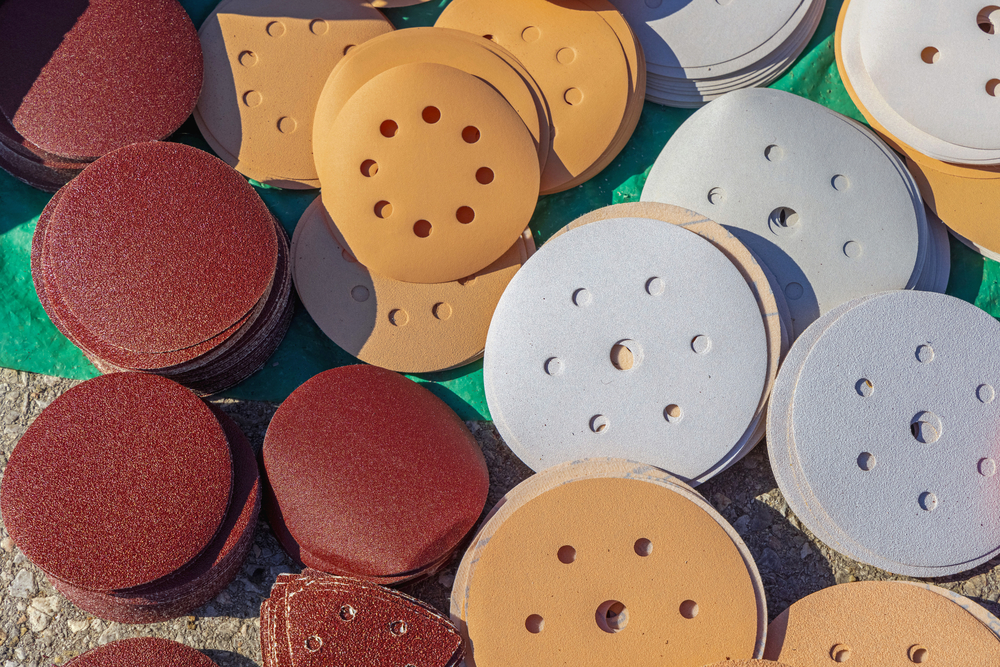
When it comes to combating the loss of friction caused by the loss of your microscopic peaks and valleys, the method that a lot of pros turn to is sanding their ball.
By roughing up the surface of your bowling ball, you are recreating those microscopic peaks and valleys that have been worn down as you have bowled.
If you are a first-time resurfacer it would be an extremely good idea to take your ball into a pro shop and have them resurface your ball there.
Many shops have a machine called a spinner that helps them sand and resurface your ball quickly and efficiently without much of a risk of damaging your ball.
If you have a little more experience under your belt then it might be a good idea for you to look into a resurfacing kit.
These do-it-yourself kits can usually be purchased online or at pro shops and are done in the comfort of your own home. It is still advised to seek advice from a professional on how to sand for your first few times at home but once you get the hang of it you are good to go!
Revivor:
If desperate times call for desperate measures some pro bowling shops have what is called a revivor oven to help get the friction back in your ball.
This oven uses heat to draw the oil out of the ball while the ball rotates to make sure the heat is getting distributed evenly. Revivor ovens can also be purchased for personal use should you want to have one on hand instead of going to a shop.
How Do You Throw a Hook Bowling Ball?
The technique to throw a hook ball takes a lot of time to master as well as a lot of practice.
There are so many different things to master when learning to hook such as aiming, where you need to throw the ball just right in order to get it to curve into the pocket.
You also need to make sure you have the right grip for the right type of ball in order to get the spin and power you need to generate a hook.
While the task might seem daunting many bowlers say that once you’ve mastered the hook ball, you will never go back to regular straight bowling.
Grip:
In order to get a bowling ball to hook the first step is to make sure you have the proper grip.
Hopefully, you are starting your hook bowling journey with a resin ball and have what is called a fingertip grip drilled into the ball.
If you do not have this type of ball and find yourself working with a conventional grip with a house ball that is fine, you just have to make sure to put more power in your throw to compensate.
To make sure you are gripping your ball correctly start by inserting your middle and ring fingers into the grip holes. (Up to the first knuckle for the fingertip grip and second for conventional grip.)
While gripping the ball you want to move your index finger out away from the holes, not to the point of pain or being uncomfortable but just enough to help you control the hook of the ball a little better.
Make sure your dominant hand is under the bowling ball while it is gripping it, almost as if it was cradling the ball. This helps control the ball and generate spin upon release. As you are adjusting your grip bring up your non-dominant hand to the side to help support the ball and you are ready to go!
Throw:
When positioning your body for this throw your starting position should place your ball on your dominant hand’s side, a little higher than your waist and somewhat snug against your chest.
When you are in the approach and getting ready to throw the ball the goal of the throw is to make sure your hand stays behind the ball. This helps generate a hook and gives you more power for the throw.
Release:
When you release the ball your thumb should leave it’s socket first, allowing the fingers to spin the ball as you bring your hand up and remaining your fingers from the fingers holes and ending with a natural flicking motion.
In order to generate the spin you want your hand’s finishing position should almost look like you are ready to give someone a handshake, anything else may be a bit too far and cause your ball to go off target.
Practice:
One of the neatest tricks to practicing the hook throw is to take a small tennis ball and cradle it in the palm of your hand. Practice your swing as if you were doing a hook throw and follow through with your fingers to create a spin on the ball as it leaves your hand. The ball should fly straight through, you don’t want it turning and smacking the wall, it just needs to spin as it flies straight out of your hand.
Practice on the ball as much as you can before trying to create a ball hook in bowling. It will give you a lot of visual pointers on what you need to change! Hook bowling may seem scary to those who are just beginning to try this type of throw, but there really is nothing to fear. This is simply a new style of throwing that will take some practice to master, just like straight bowling.
But with hard work and a lot of practice, you will soon find that hook bowling helps elevate your game to levels you did not know were possible.
Related Articles
My Final Words
Not everyone will master the art of hook bowling, but those who do will significantly elevate their bowling game. Bowling with a hook offers a strategic edge through improved angles, power, and pin knockdown capability. Embracing this technique requires selecting the right equipment—specifically, resin or particle bowling balls designed for superior grip and friction.
Proper maintenance, including regular cleaning and periodic resurfacing, ensures your ball retains its optimal hooking potential. Technique mastery, from the correct grip (using middle and index fingers appropriately) to the precise release, is fundamental in executing the perfect hook throw. Practice, especially with exercises like spinning a tennis ball, is essential to refine your skill.
Ultimately, hook bowling increases your scores and deepens your understanding and enjoyment of the sport, making it a valuable skill for bowlers aiming to excel in leagues and tournaments. Combining equipment knowledge, maintenance practices, and skill development, this comprehensive approach is your pathway to becoming a proficient hook bowler.
Kira Byrd, a Certified Fraud Examiner, holds a B.S. in Accounting from the University of Alabama at Birmingham. With a passion for bowling from her childhood, Kira has poured her expertise and personal experiences into creating and nurturing Bowling For Beginners. Kira's mission is to meet new bowlers where they are and guide them toward consistently achieving higher scores. With a focus on skill development and strategic techniques, she empowers readers to take control of their game and unlock their true potential.
Bowling For Beginners embodies strict editorial integrity, ensuring reliable and unbiased information. Kira's commitment to delivering valuable insights and practical strategies is reflected in every article. Here's an explanation of our editorial policy and how we get money.



